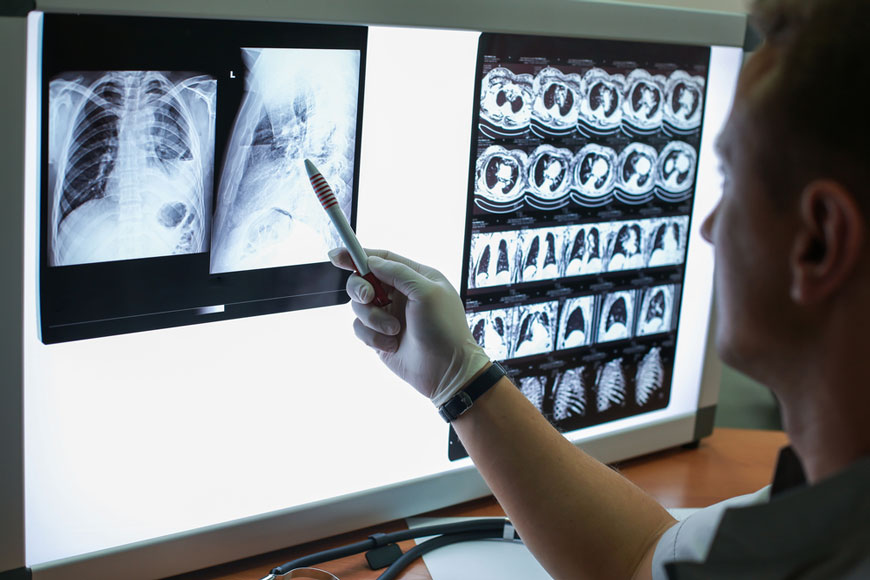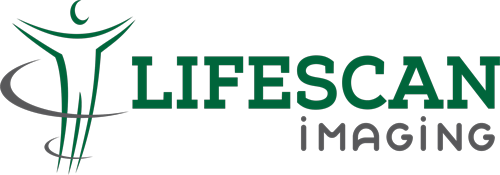
Coronary CTA
Coronary CT angiography (CTA) is an x-ray imaging technique performed with intravenous (IV) contrast (dye) which examines the blood vessels that supply the heart. At the same time the structure of the heart is also well visualised and so the examination is sometimes simply called a cardiac CT. The CT scanner makes images that are assembled into three-dimensional (3D) views of the blood vessels using state-of-the-art computer software.
Lifescan Imaging uses a Siemens SOMATOM Definition Flash™ CT scanner that enables the beating motion of the heart to be “frozen”, giving clearer and more accurate pictures. The latest technology in this scanner also permits the scan to be carried out in the majority of patients with much lower radiation doses than before.
What is it for?
The main use of a coronary CTA is as a non-invasive way to determine whether either fatty deposits or calcium deposits (called plaques) have built up in the coronary arteries, which supply blood to the heart muscle. If left untreated, these plaques can result in heart muscle damage. This can lead to fatigue, shortness of breath, chest pain and/or a heart attack.
Research has shown that a normal coronary CTA scan is a strong indicator of the absence of coronary artery disease. It is, therefore, an excellent test for excluding coronary artery disease. However, when it does show the presence of moderate or severe coronary artery disease, further testing may be necessary to determine the significance of the findings.
Coronary CTA may also be helpful in patients with unclear causes of chest pain, which is a common problem. There are many possible causes of chest pain, which can be difficult to distinguish. CTA may be helpful to rule out the most dangerous causes of chest pain, such as narrowing or blockage of a coronary artery, a pulmonary embolism, or an aortic aneurysm/dissection.
Sometimes other cardiac tests produce uncertain results. In these cases, CTA can evaluate the coronary arteries to confirm or exclude the presence of disease and spare the patient a conventional catheter angiogram.
Much research is being performed on the evolving role of coronary CT, but the following are just some of the circumstances under which a cardiac CTA may be used:
- Evaluation of chest pain in patients with non-typical symptoms or unclear/equivocal stress test results.
- Evaluation of coronary artery anomalies.
- Evaluation of coronary arteries in those with new onset of heart failure.
- Assessment of complex congenital heart disease.
- To check that bypass grafts and/or stents have not become blocked.
- Pre-surgical assessment of coronary arteries.
Currently, using CTA to detect coronary artery disease as the basis for primary prevention in patients with no symptoms and at low risk for the disease is not widely recommended. In patients at intermediate to high risk but no symptoms, its use is currently uncertain (the test is acceptable for this purpose to some doctors but not to others).


Side effects and other considerations
A CTA scan is generally a low risk procedure. Occasionally, patients experience an adverse reaction to the contrast agent. Some patients develop itching or a rash following the injection. These symptoms are usually self-limiting and resolve without further treatment. Antihistamines can be administered if needed for symptomatic relief.
arely (less than 1 in 2000), a more serious allergic reaction, called an anaphylactic reaction, occurs that may result in breathing difficulty. This reaction can be potentially life threatening and requires medications and treatment to reverse the symptoms. We are prepared to deal with such reactions in the unlikely event that they occur.
CT scanners make use of x-rays. For your safety, we employ the relevant technology and techniques that are suited to reduce the amount of radiation exposure to a minimum. Because x-rays can harm a developing fetus this procedure is not recommended if you are pregnant.
Also, research has shown that important findings outside the heart sometimes show up on coronary CTA. These include nodules in the lungs, enlarged lymph nodes, or abnormalities in the liver. These findings may require further investigation to determine their significance.


